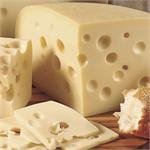

It is chilly today in Phoenix. Not in comparison to colder climates, but for Arizona 50 degrees with the sun shinning is cold. When I received an e-mail from MySwitzerland, the fondue looked especially good. I know we have written about fondue before, but I wanted to share the following from Switzerland.
All about fondue
Where does fondue come from?
Surely everybody knows that fondue, that favorite hot cheese dish, turns every meal into a social occasion. If the Swiss hadn’t had fondue on the menu for ages, someone was bound to have invented it – cheese fondue. Once the piece of impaled bread meets the delicious steaming mass of melted cheese, suddenly all is right with the world.
The story goes that a long time ago most Alpine dwellers were poor, the winters long and hard, the bread went dry in the bread bin and the cheese had become hard, so the hungry mouths gathered around the kitchen table for cheese fondue.
Another story tells us that a monk called Vacarinus invented cheese fondue in the 13th century. The reason was the strict rules forbidding the monks from eating their beloved cheese when they were supposed to be fasting. Vacarinus heated up and melted his cheese creation, thereby turning it into something different. This led to a lengthy debate, with the monks eventually deciding that this “cheese soup” was different from a piece of cheese, and therefore allowed during periods of fasting!
We do not know the date that fondue was invented: as early as 1863, a similar mixture (called “egg fondue” and comprising of Vacherin cheese, egg yolk, cream and butter) was mentioned in a popular Berne cookbook by Lisette Rytz, and in the 1900 edition it was replaced by “cheese fondue.” Since around 1960, fondue has held a firm place in Swiss cuisine, and today every household consumes three and a half fondues per capita, per annum.

What do you need for a successful fondue?
Spirit burner, cooking pot, plates, fondue forks.
Swiss cheese:
Usually Gruyere AOC and Emmental AOC, but also Vacherin Fribourgeois AOC, Raclette, Appenzell, Tilsiter and Sbrinz AOC work fine. It is cooked most quickly and conveniently directly on the cooker hob. If using a spirit burner, the cheese should only be allowed to simmer gently.
Wine:
A generous splash of dry white wine and a little lemon juice, but apple juice and sparkling wine are also suitable.
Spices:
Typically garlic, pepper and nutmeg. Onions, shallots, caraway seeds, paprika, green pepper and curry give fondue a special touch.
Accompaniment:
White bread, black bread, wholemeal bread, rye bread, baguette. Also potatoes and various vegetables.
Drinks:
A sparkling white wine or a cup of weak black tea.
The fondue starts to separate:
Put the cooking pot back on the hob and add a teaspoon of cornflour dissolved in white wine and a drop of fresh lemon juice. Stir vigorously and bring to the boil briefly.
The fondue is too thin:
Turn up the flame on the burner, add a little cornflour dissolved in wine or cherry brandy, as well as a handful of grated cheese. Stir.
The fondue is too thick:
Turn up the flame on the burner and add a little white wine whilst stirring vigorously.
Your guests would like more:
If you have some grated cheese left, you can make the fondue go further at any time. Turn up the flame on the burner, then add a little cheese and a little white wine whilst stirring vigorously. If you have no cheese left, tell your guests about the fantastic dessert you have prepared for them.
Which recipe is best?
A fondue made with Swiss cheese, of course! No other meal combines tradition, conviviality and pleasure in such a refined manner. So try a “Waadtlander,” a “Freiburg” or a central Swiss cheese fondue – or create your own speciality: the wide selection of Swiss cheeses available leaves nothing to be desired. One thing is for certain: a fondue is always something a little different – and always a treat!
International Food Wine & Travel Writers Association
Books By Hills Success Log Where & What in the World Blog
Member: Society of Professional Journalists
“Success” was Indie Finalist in the Writing and Publishing category of the 2009 Next Generation Indie Book Awards












